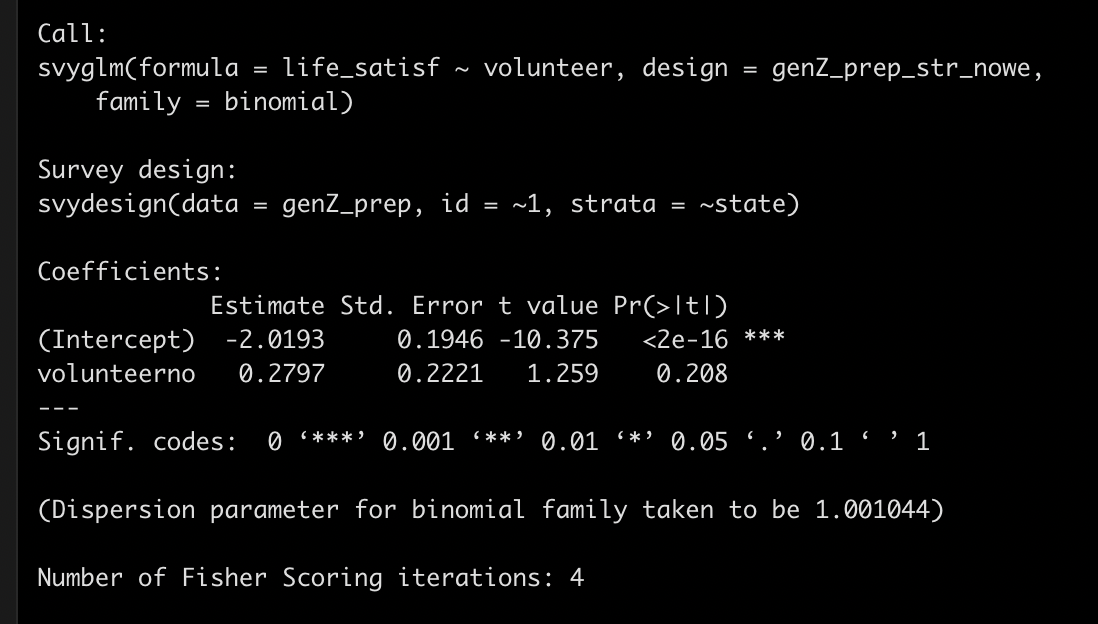I have trouble understanding the regression output that I created for my beginners class of R. I use two binary variables and ask whether the fact that someone volunteers raises hers or his life satisfaction. I am familiar with the interpretation of numeric variables as "increase in X leads to decrease in Y". But how do I interpret binary variables? How do I handle the fact that X is not statistically significant while Y is?
This might be more of a Stackoverflow question: Should/Can I change the coding so that it examines the effect of people which are volunteering (volunteeryes)?

